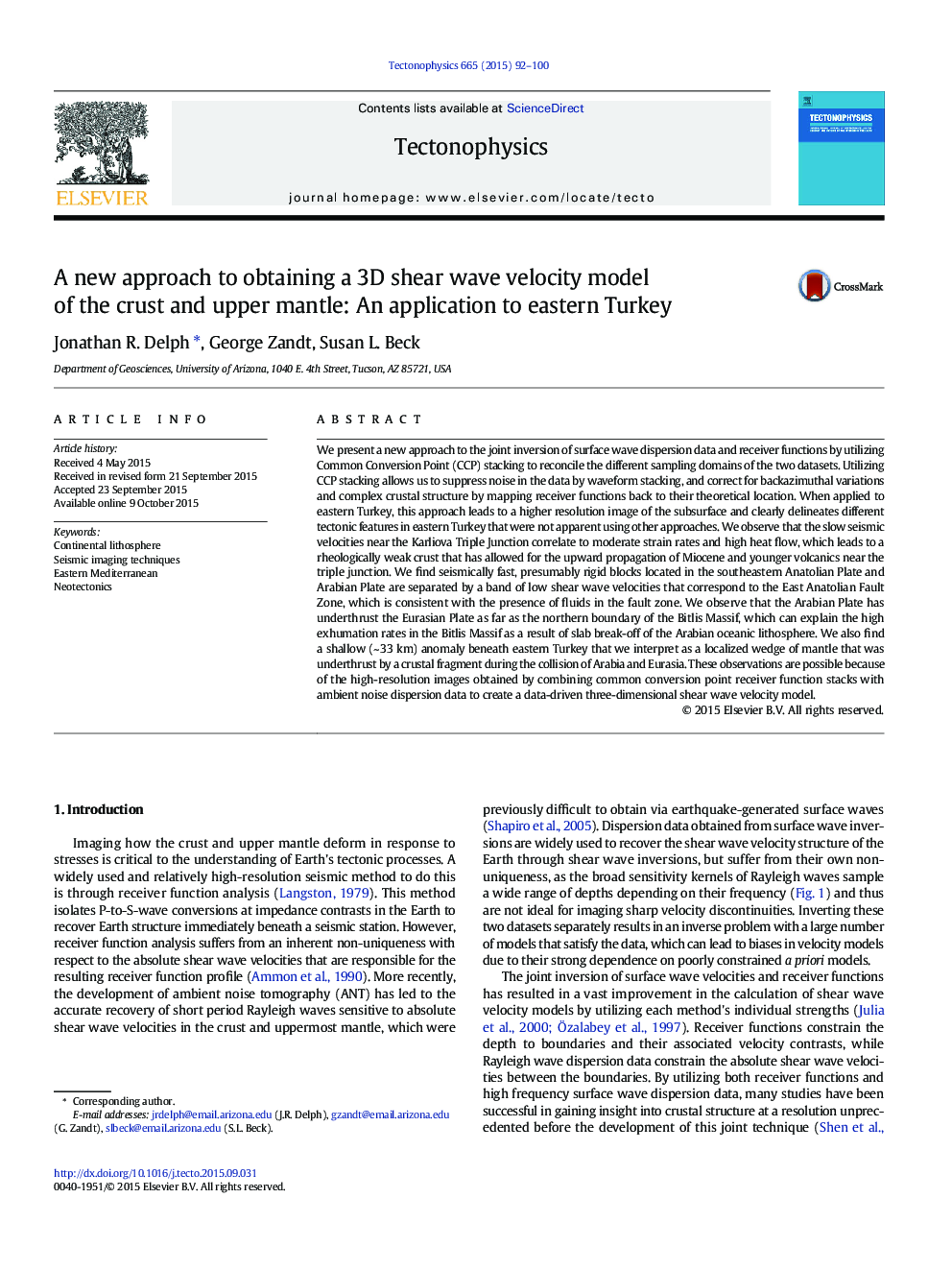| کد مقاله | کد نشریه | سال انتشار | مقاله انگلیسی | نسخه تمام متن |
|---|---|---|---|---|
| 6433488 | 1636730 | 2015 | 9 صفحه PDF | دانلود رایگان |
- Utilizing CCP stacks for a joint inversion of Rayleigh waves and receiver functions.
- Slow shear velocities correlate with recent volcanism and moderate strain rates.
- The East Anatolian Fault zone separates two rigid, seismically fast blocks.
- Arabian lithosphere underthrusts as far as the northern edge of the Bitlis Massif.
We present a new approach to the joint inversion of surface wave dispersion data and receiver functions by utilizing Common Conversion Point (CCP) stacking to reconcile the different sampling domains of the two datasets. Utilizing CCP stacking allows us to suppress noise in the data by waveform stacking, and correct for backazimuthal variations and complex crustal structure by mapping receiver functions back to their theoretical location. When applied to eastern Turkey, this approach leads to a higher resolution image of the subsurface and clearly delineates different tectonic features in eastern Turkey that were not apparent using other approaches. We observe that the slow seismic velocities near the Karliova Triple Junction correlate to moderate strain rates and high heat flow, which leads to a rheologically weak crust that has allowed for the upward propagation of Miocene and younger volcanics near the triple junction. We find seismically fast, presumably rigid blocks located in the southeastern Anatolian Plate and Arabian Plate are separated by a band of low shear wave velocities that correspond to the East Anatolian Fault Zone, which is consistent with the presence of fluids in the fault zone. We observe that the Arabian Plate has underthrust the Eurasian Plate as far as the northern boundary of the Bitlis Massif, which can explain the high exhumation rates in the Bitlis Massif as a result of slab break-off of the Arabian oceanic lithosphere. We also find a shallow (~Â 33Â km) anomaly beneath eastern Turkey that we interpret as a localized wedge of mantle that was underthrust by a crustal fragment during the collision of Arabia and Eurasia. These observations are possible because of the high-resolution images obtained by combining common conversion point receiver function stacks with ambient noise dispersion data to create a data-driven three-dimensional shear wave velocity model.
Journal: Tectonophysics - Volume 665, 8 December 2015, Pages 92-100
